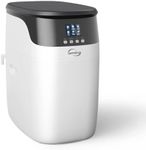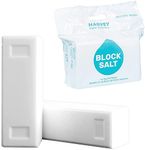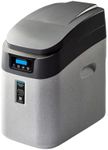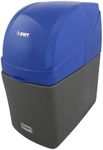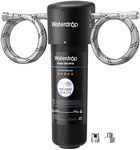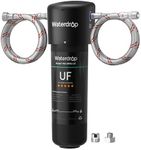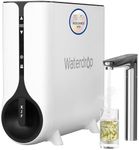Buying Guide for the Best Water Softener
Choosing the right water softener for your home is essential to ensure you have access to soft water, which can help prevent scale buildup in your pipes and appliances, improve the efficiency of your water heater, and make your skin and hair feel softer. To make an informed decision, you need to consider several key specifications that will determine the effectiveness and suitability of the water softener for your specific needs.Grain CapacityGrain capacity refers to the amount of hardness minerals (like calcium and magnesium) a water softener can remove before it needs to regenerate. This spec is important because it determines how often the system will need to regenerate, which affects both water and salt usage. Grain capacities typically range from 20,000 to 80,000 grains. For a small household with 1-2 people, a lower capacity (20,000-30,000 grains) may be sufficient. For larger households with 4 or more people, a higher capacity (40,000-80,000 grains) is recommended. To pick the right one, consider the number of people in your household and your average water usage.
Regeneration TypeRegeneration type refers to how the water softener refreshes its resin beads to continue removing hardness minerals. There are two main types: time-initiated and demand-initiated. Time-initiated systems regenerate at a set schedule, regardless of water usage, which can lead to inefficiency. Demand-initiated systems regenerate based on actual water usage, making them more efficient and cost-effective. If you have fluctuating water usage or want to save on water and salt, a demand-initiated system is a better choice. For consistent water usage, a time-initiated system may suffice.
Salt EfficiencySalt efficiency measures how effectively a water softener uses salt to regenerate its resin beads. This is important because higher salt efficiency means lower operating costs and less environmental impact. Salt efficiency is often expressed in terms of grains of hardness removed per pound of salt used. Look for systems with higher efficiency ratings if you want to minimize salt usage and reduce maintenance costs. If you are environmentally conscious or want to save on salt, prioritize models with high salt efficiency.
Water Flow RateWater flow rate indicates how much water the softener can treat per minute, usually measured in gallons per minute (GPM). This spec is crucial because it affects the water pressure in your home. Flow rates typically range from 7 to 20 GPM. For smaller households or homes with fewer water fixtures, a lower flow rate (7-10 GPM) may be adequate. For larger homes with multiple bathrooms and high water usage, a higher flow rate (15-20 GPM) is necessary to ensure consistent water pressure. Choose a flow rate that matches your household's water usage patterns to avoid pressure drops.
Resin TypeThe resin type in a water softener is the material that captures hardness minerals. There are standard resins and high-capacity resins. Standard resins are suitable for most households and provide good performance. High-capacity resins are more durable and can handle higher levels of hardness, making them ideal for areas with extremely hard water. If you live in an area with moderately hard water, standard resin will suffice. For very hard water, consider high-capacity resin to ensure long-lasting performance and efficiency.
Bypass ValveA bypass valve allows you to divert water around the water softener, which is useful for maintenance or if you need to use untreated water for certain tasks. This spec is important for convenience and flexibility. Some systems come with a built-in bypass valve, while others require you to purchase it separately. If you anticipate needing to bypass the softener frequently, look for models with an easy-to-use built-in bypass valve. For occasional use, a separate valve may be sufficient.


